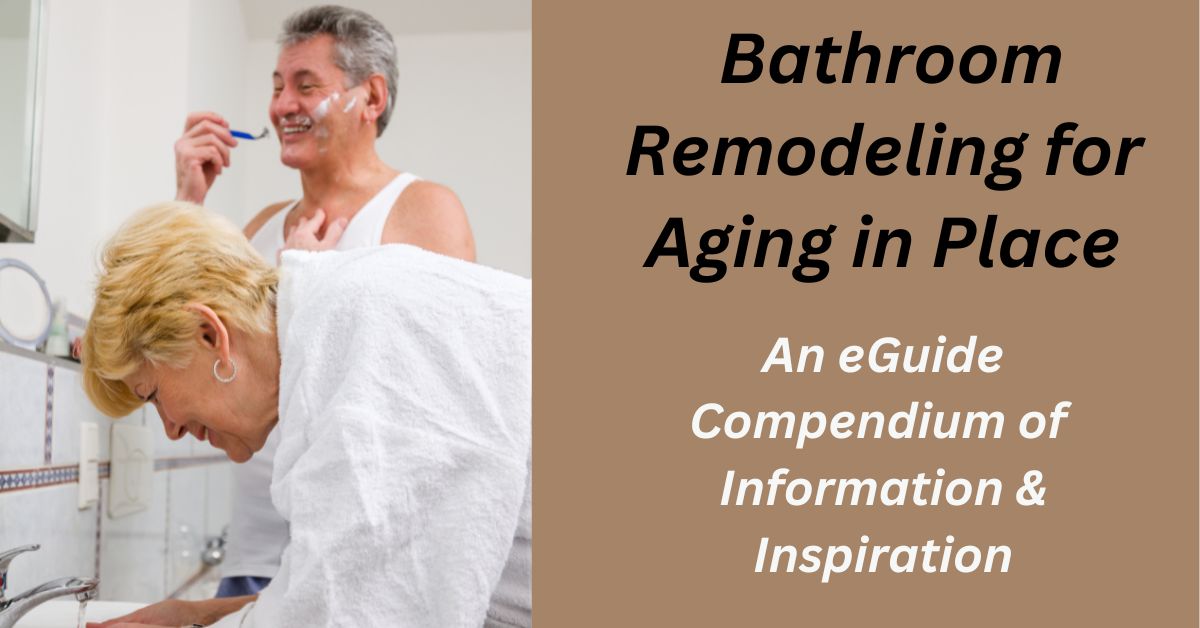Table of Contents
Note: If you came to this post on decluttering tips through a random search, please click on this parent page and our home page for more context.
How To Declutter
Top home decluttering tips: The home decluttering process combines three main things. The first is the right mindset, the second is the right method, and the third is patience.
In a separate post, we discuss the reasons why we should declutter our homes in the first place.
- Related post: Reasons to Declutter
But in this post, we go into home decluttering tips, which cover the mechanics of decluttering a home and how best to do it.
Decluttering Mindset
Decluttering requires the “purging” of your household stuff. And the very idea of doing this seems to be in some sense threatening. It’s not easy letting stuff go.
So here is how to look at it. It’s really a matter of bringing things down to earth and putting them in a practical context.
Imagine that you are selling your home and moving all your stuff to a new home in another state. And then ask this question about everything in your current home:
Do I want this thing badly enough to pay someone to pack it up and ship it to my new home?
If the answer is “yes,” ask a further filtering question. Have I used this thing more than a couple of times in the past year?
If the answer is still “yes,” then it is a “keeper.” Otherwise, it probably shouldn’t be.
Everything that isn’t a keeper will fall into these other 4 categories:
- Things you will donate
- Things you will consign or otherwise try to sell
- Things you will recycle
- Things you will trash
Decluttering Method
The actual process of decluttering should be thorough but not rushed. If you have a whole house to deal with, you are not going to declutter it in a day – maybe not even in a month. So don’t underestimate the task and don’t be hasty about it.
So you want to take it slow and do it room by room, without skipping ahead. Doing it any other way will drive you crazy. And if you are dealing with the kitchen, which is home to many dozens of things, you can work on one part of it at a time.
And then, on a room-by-room basis, you divide everything in it into two categories:
Items That Are in “Plain Sight”
Items in plain sight are what you can see in the room without having to open anything. They will include:
- Things that are furniture.
- Things such as floor lamps, that are standing on the floor.
- Things that are on bookshelves (books, collectibles, etc.)
- Things that are on the wall (artwork etc.)
The strategy is to deal with the “plain sight” items first. You will likely find that eliminating clutter among these will give you more space to deal with the “out of sight” items.
The large ”plain sight” items will get labeled as to your intention for them. It is best to get the large items to be discarded out of the room immediately. A staging area in the garage would be a good place to put them.
You will deal with the small “plain sight” items in the same way as the “out of sight” items, below.
Items That Are “Out of Sight”
Items that are out of sight include everything that is in drawers, closets, or cabinets. This is what will take the most work as you declutter.
Sorting Things Out
“Sell” (the things you plan to sell or consign).
“Recycle” (the paper, plastic, or glass things that will go in your recycle containers to be picked up, or the discarded or outdated electronic items that you will take to a recycling center.
“Trash” (the things you will have picked up with the garbage)
Begin the sorting process by putting everything on the floor (the bed is better for a bedroom), where you can see it all easily. And then start distributing them to your boxes or bins.
Home Decluttering Tips – Room by Room
We’ll look at every room in the house separately. Each one requires a slightly different approach and we have some room-specific tips to offer.
Decluttering the Bathroom
The medicine cabinet is a good place to start. And because everything in there probably belonged there in the first place, you can likely put it back but in good order. However, take the opportunity to clean the interior of the cabinet first.
Winnow out the expired medications, first aid items, and skin care products. Place these in the container you marked “trash.” Then return the keeper items to the medicine cabinet. Put the items you use most at eye level.
After that, pull the contents out of the vanity drawers and cabinets below the sinks. It can all go on the floor. Then sort it all into your organizing bins.
Next, take a look at your “keeper” items and decide if they should be put back where they came from or somewhere different. It may be that some of these things should be put away in a different room, perhaps a storage closet or even the garage.
If you are returning things to the vanity drawers, put the items you use most in the upper drawers. Clean the drawers and cabinet space before putting stuff back.
Finally, follow the same routine with the tub/shower area and any other parts of the bathroom. Clean as you go.
By the way, this decluttering exercise in the bathroom may reveal that you really don’t have enough storage space. And this may prompt you into considering a bathroom remodel or other updates; even if it’s only the addition of hooks or shelves.
- Related post: Bathroom Remodel Overview
Decluttering the Bedroom
The first order of business is the bed. A neatly made bed makes a great sorting area because working from a raised surface is much easier than working with stuff on the floor.
Next move to the nightstands. Remove everything from the surfaces and cabinets and put it all on the bed. Then sort it into your organizing containers.
Then go to the dressers and chests and do the same. If there are items of clothing that are “keepers,” lay them on the bed, rather than place them in the “keep” bin where they could get crumpled.
Now take the opportunity to wipe clean the insides of the drawers and cabinets you have emptied. (We’ll get to the closets separately.)
Finally, take everything out of the “keeper” bin and put it away in its proper place. This is a good opportunity to reorganize everything. And it could be that some of the stuff you are keeping doesn’t belong in the bedroom anyway.
Decluttering the Closet
Decluttering a closet is especially hard for women. It’s possible over time to develop sentimental attachments to items of clothing. So we need to find a way to overcome emotional obstacles.
First, pull your clothing out by category (underwear, suits, sweaters, dresses, slacks, denim, footwear, etc). Lay it out on the bed as you go. But, as you do this, run each item through an instant mental “keep or toss” filter.
It is often immediately obvious that an item should get purged. In this case, you put it in the appropriate donate, sell, recycle, or trash bin.
Now you look at the items on the bed. Let’s say it’s all your denim items. You are now in a position to compare them all and it’s easier to run them through new “filtering” questions. These are:
- Does it still fit? If it’s too small, purge it. Don’t kid yourself with “Well. I’m going to lose weight.” You may or may not. And, if you do, make a mental note to reward yourself by getting a new pair.
- Have I worn them in the past couple of years? If not, purge it.
- Put it on and ask “Do I really still like it?” If not, purge it.
- Do I really need so many of these? If not, do a comparative shop among what you have left on the bed and pare the number down.
Of course, depending on where you live, you will have to factor in considerations of winter, spring, summer, and fall.
As you work through this process, put all your keeper items back in the closet, before you work on the next category of clothing. In this way, your closet is getting reorganized as you go by clothing type.
Keep in mind that your goal is to end up with a closet full of clothes that is easy to work with and only contains the items you really like to wear and that fit your current lifestyle.
Decluttering the Entryway
Every home has an entryway. And it will range from the bare minimum area by the front door to a more elaborate foyer or mudroom.
But no matter what you have, the focus should be on making and keeping it functional and welcoming. By welcoming, we mean that the entryway should give you and your guests a good feeling as you enter the home.
And because the entryway is used so frequently, it is prone to accumulating clutter. This is stuff that finds a way of migrating there from other rooms in the home
So start by making the entryway functional and accessible. At a basic level, you need somewhere you can reliably find your car keys, house keys, cell phone, outgoing mail, and any other item you routinely take with you as you leave the house.
Treat all entryway closets and table areas the same as other areas of the house. And put everything in the appropriate bins. As you work through the “keeper” bin, you will likely find you will be returning items to other rooms in the house.
As you work through decluttering the entryway, consider ways of making it more functional, say, by the addition of hooks, shelving, or a bookcase.
Decluttering the Kitchen
Decluttering the kitchen starts with the countertops. These are where you will find most of the “plain sight” items in the kitchen. And they are a well-known clutter magnet. So get everything off the counters and sort it into your organizing bins. Don’t put anything back on the counters yet because you need clear counter space for the next steps of the exercise.
Then start with the upper cabinets and put all the contents on the countertops. Then wipe the cabinet interiors clean. Sort everything into your organizing bins and return your “keeper” items to the upper cabinets. However, there may be some of these items you want to place somewhere handier. If so, put these aside.
Then work through every other storage area in the kitchen (including the pantry) and repeat the process. As you return items to their storage areas, group similar items (especially foodstuffs) together. This will help you with kitchen management going forward.
See if you can find an alternative storage spot for the items you originally removed from the countertops. It’s always good to keep countertops as clear as possible.
As you work through your kitchen declutter exercise, think of ways you might improve your kitchen through the addition of new storage jars, drawer organizers, etc. This whole exercise may even make you think of a kitchen remodel.
- Related post: Kitchen Remodel Overview
Decluttering the Living Room
The living room is where the “plain sight” – “out of sight” method we talked about above really comes into play.
Look for items, such as table lamps or floor lamps that are just getting in the way or outdated. And perhaps the room has more furniture in it than you really need. Things like this are candidates for decluttering.
And then attend to the books and other things on side tables, coffee tables, bookshelves, and on the walls. Clean these surfaces as you remove things from them.
Look over any toys that are in the living room. If the kids don’t use them anymore, donate them, if they are usable.
Otherwise, dispose of them. And, if the toys you are keeping are typically scattered on the floor, encourage the kids to tidy them up and put them in a nice storage hamper.
A quick tip: Put the toys you intend to purge in a temporary holding container in the garage, just in case the kids miss them. You don’t want to cause tears.
Decluttering the Dining Room
When it comes to decluttering the dining room, follow the same strategy as for the living room.
A clutter-free dining room should feature a dining table that is clear except for a flower vase or fruit bowl centerpiece. In addition, there should be a sideboard or credenza that should be home to placemats, napkins, serving utensils, and anything else you use when dining. There should be nothing on its top surface, except perhaps for a couple of decorative pieces.
If you don’t have a sideboard, it is highly recommended you get one, because it is really helpful in keeping a dining room clutter-free
Decluttering the Laundry Room
Oftentimes, laundry rooms lack decent storage space and are prone to clutter for this reason. So before getting into decluttering your laundry room, see what you can do to add storage space, so you won’t need to declutter again.
- Related post: Laundry Room Design
The simplest solution is to add shelving – and it does not need to be behind cabinet doors. You just want to be sure you have dedicated space for keeping detergents, bleach, and stain removers. And also space for staging fresh laundry before taking it to bedrooms and bathrooms.
And if you have the wall space, go for a drop-down ironing board. Plus see if you can find room for laundry bins, where you can separate out white and dark fabrics.
If you don’t take measures like this you will be forever decluttering your laundry space.
How To Dispose Of What You Have Purged
As we said earlier, disposing of what you have purged during your decluttering project amounts to donating, selling, consigning, recycling, or trashing. The last two don’t need discussion, but here are some thoughts on donating or selling.
Selling Your Stuff
Selling seems like a great idea at first thought. But is it really?
Selling things requires time and effort. So the calculation is whether the value of any particular item is worth the work involved. Only you can be the judge of that.
Let’s review the selling options.
Consignment
If you have designer clothing in good condition, antiques, or good artwork, consignment may be worthwhile but be prepared to surrender up to 60% of its value. But by all means, talk to consignment stores in your area. They all have their own rules for how they will work with you.
Yard or Garage Sale
We can’t do better than Dave Ramsey’s advice on garage sales. He explains in detail how to organize, advertise, and price your stuff for this kind of sale. But, be warned. It’s a lot of work. On the other hand, if you are a gregarious type, you might find it a lot of fun too.
Selling Online
To sell online, you will have to price and take photos of each item individually before posting it. And then there is having to deal with payment and shipping issues unless you sell locally.
So let’s look at the online options.
Selling locally
- Craigslist: This site has been around forever.
- OfferUp and LetGo: Here is a comparison.
eBay and alternatives
Donating
Donating something to a good cause is just a good thing to do. Besides, you may be able to get “value” out of it by taking a tax deduction. Talk to a tax professional about this. Donating is definitely our own ‘go-to’ way of disposing of clutter.
You may have local charities specific to your area but those listed below operate widely in the US.
Goodwill
Goodwill uses revenue from their stores to help with local employment opportunities.
Habitat for Humanity
Habitat for Humanity provides affordable housing to needy families from proceeds generated by their Habitat ReStores. And remember that these are great places to go shopping for things to include in your remodel project.
The Arc
The Arc helps people with intellectual and developmental disabilities.
Salvation Army
The Salvation Army offers many charitable services.
Conclusions on Home Decluttering Tips
The main takeaway when following these decluttering tips is to take your time and be thorough. Take breaks. You can pause the effort for days at a time if you like. After all, it took the clutter a long time to accumulate and, unless you are selling your home, there is no need to rush
Don’t get discouraged. And, if you do, remind yourself of the reasons for decluttering in the first place. You will really love the end result.
And don’t dwell on the things you are giving up. Rather think of the good you are doing by giving a lot of it away.





Leave a Reply